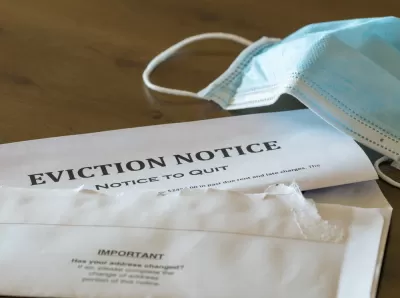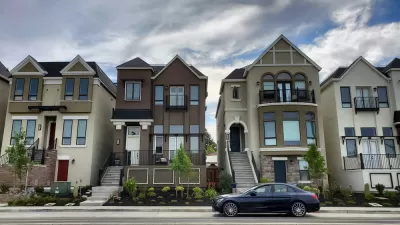Despite efforts to implement rental assistance programs and eviction moratoriums during the COVID-19 pandemic, tens of thousands of California households were served eviction notices last year, with more falling behind on rent payments.

Close to 36,000 California households were hit with eviction notices in the 2021 fiscal year (from July 1, 2020 to June 30, 2021). According to an article by Lauren Hepler and Raheem Hosseini in the San Francisco Chronicle, “Those numbers don’t include many tenants who left under threat of eviction, negotiated move-out deals or who still owe back rent from the pandemic — groups that advocates warn are hard to track and still growing as emergency state renter protections expire.”
The authors write that “The data comes from the most recent annual report by the Judicial Branch of California and underscores the limits of state efforts to mute the pandemic’s effects on financially vulnerable residents. Renter advocates fear it’s also a preview of evictions to come after two years of upheaval in one of the country’s most expensive places to live.” About 11 percent of the eviction filings were in the San Francisco Bay Area, primarily in Santa Clara, Contra Costa, and San Francisco counties.
“Statewide eviction protections that were cobbled together in real time from gubernatorial executive orders, state judicial decrees, public health orders and legislative action were supposed to buy time for residential tenants struggling to pay rent and other living costs as a result of pandemic economic quakes. The protections were extended multiple times, and finally expired after 27 months on July 1.” Now, the future of tenants across the state is uncertain. According to the National Equity Atlas, 738,000 California households are behind on rent as of May 2022.

Study: Maui’s Plan to Convert Vacation Rentals to Long-Term Housing Could Cause Nearly $1 Billion Economic Loss
The plan would reduce visitor accommodation by 25,% resulting in 1,900 jobs lost.

North Texas Transit Leaders Tout Benefits of TOD for Growing Region
At a summit focused on transit-oriented development, policymakers discussed how North Texas’ expanded light rail system can serve as a tool for economic growth.

Alabama: Trump Terminates Settlements for Black Communities Harmed By Raw Sewage
Trump deemed the landmark civil rights agreement “illegal DEI and environmental justice policy.”

How Community Science Connects People, Parks, and Biodiversity
Community science engages people of all backgrounds in documenting local biodiversity, strengthening connections to nature, and contributing to global efforts like the City Nature Challenge to build a more inclusive and resilient future.

Alabama: Trump Terminates Settlements for Black Communities Harmed By Raw Sewage
Trump deemed the landmark civil rights agreement “illegal DEI and environmental justice policy.”

Dear Tesla Driver: “It’s not You, It’s Him.”
Amidst a booming bumper sticker industry, one writer offers solace to those asking, “Does this car make me look fascist?”
Urban Design for Planners 1: Software Tools
This six-course series explores essential urban design concepts using open source software and equips planners with the tools they need to participate fully in the urban design process.
Planning for Universal Design
Learn the tools for implementing Universal Design in planning regulations.
City of Santa Clarita
Ascent Environmental
Institute for Housing and Urban Development Studies (IHS)
City of Grandview
Harvard GSD Executive Education
Toledo-Lucas County Plan Commissions
Salt Lake City
NYU Wagner Graduate School of Public Service





























